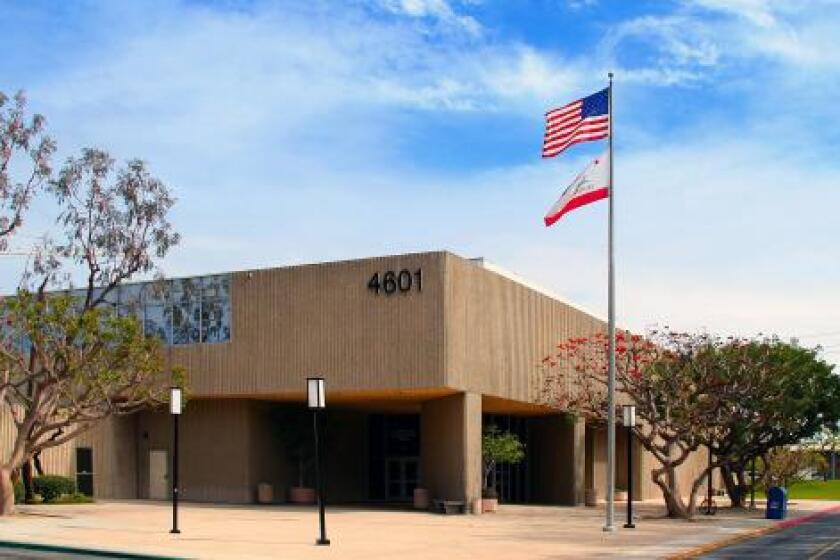Getting an out-of-this-world experience
- Share via
Jenny Marder
Their “How I spent my summer vacation” stories will likely top all
their students’ summer adventure stories. Two Surf City teachers are
flying simulated shuttle missions, growing hydroponic food and
programming a robot to perform a rescue mission in Huntsville, Ala.
this week.
Shannon Cronin and Sue Vernand are not astronauts, yet the two
women will undergo intensive astronaut training with 25 other
educators from across the nation at Space Camp, thanks to a Boeing
grant that covers all expenses for the teachers.
Vernand teaches fourth and fifth grade at Dr. Ralph Hawes
Elementary School, and Cronin teaches eighth grade at Isaac L. Sowers
Middle School. “We do this to provide educators with the experience
as well as the information and resources to take back to the
classroom,” said Al Whitaker, a spokesman for the U.S. Space and
Rocket Program. “This is Boeing’s way to instruct the next generation
of rocket scientists, engineers and explorers.”
Training at space camp will be very similar to what the real
astronauts undergo in Houston, Texas, Whitaker said. They will learn
the history and mechanics of the space program. They will do several
simulated shuttle missions and learn the techniques of everything
from launch to landing. Using advanced Lego pieces, they will build a
robot and program it to fly to the moon or to Mars, and to leave the
space capsule and assist astronauts that are stranded on the surface
of the planet.
They will learn how to grow food in nothing but water to sustain
themselves during prolonged missions. Some of the teachers will take
a crash scuba diving course to learn how to work in a weightless
environment, the closest thing that they can get to space.
Perhaps most importantly, the teachers will learn how to present
the material to their classroom when they get back.
“It’s really designed to equip the teachers to carry the
excitement about what we do here back to the classroom,” Whitaker
said. “We bring 30 teachers and reach out to 600 students. ... The
basic technique is the experience of it.”
Vernand, 49, owns a telescope and has always been interested in
stars, space, black holes and comets. She already teaches her
fifth-grade class about the history of the planets, the space station
and astronaut training.
“They enjoy it more when they can do hands-on things,” Vernand
said. “Textbook learning is boring for an 11-year-old.”
Cronin plans to incorporate what she is learning from space camp
into the space education section of her science curriculum.
Of the teachers, 11 will be from the U.S., one from Italy, one
from Russia, one from the United Kingdom, one from Australia and one
from Japan.
“It not only exposes five international teachers to our culture,
it also gives 25 [teachers] from the U.S. the opportunity to mingle
with their counterparts, with other teachers from other parts of the
world,” Whitaker said.
The course is intended to send the teachers home with a suitcase
full of materials, hardware, models and memories so that they can
describe exactly what it was like to their students.
“Anytime you can alter a classroom experience to include something
that’s hands on, you’ll see a difference in the learning process,”
Whitaker said. “The children absorb the material much easier and they
enjoy it more.”
All the latest on Orange County from Orange County.
Get our free TimesOC newsletter.
You may occasionally receive promotional content from the Daily Pilot.



